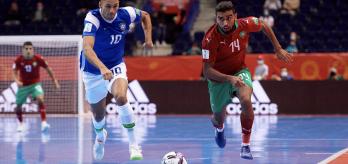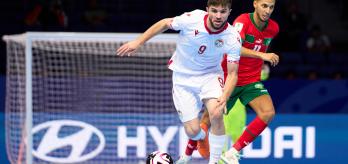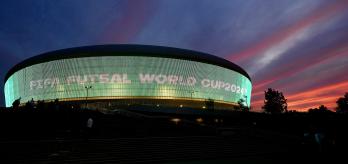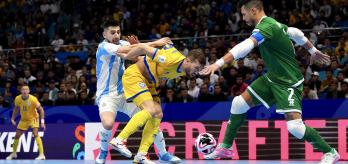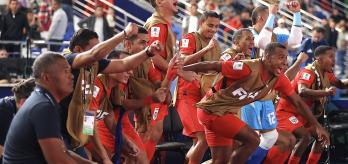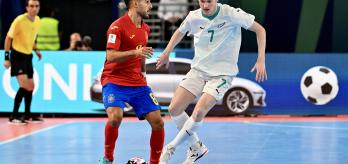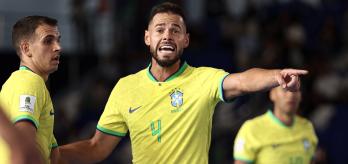Introduction
The overall philosophy of recovery entails three core principles associated with such defensive actions: delay, deny and deflect.
The loss of the ball may result in a rapid transition from attack to defence and so ‘absolute’ recovery – where every player simply heads back to get goal-side of the ball – is the primary aim. However, upon the surrender of possession, at least one player must initiate the attempt to slow the progress of the ball where possible, buying time for team-mates to get goal-side and establish some form of organised defence. This is not always possible due to positional and structural imbalances but should be part of the coached mindset and here Portugal demonstrated a consistent and exemplary approach.
Observations
The ebb and flow of futsal, with its swings from attack to defence, creates numerous scenarios where recovery is required and this World Cup was no different. Due to the increased prevalence of direct attacks, absolute recovery was a common facet for a number of teams, whereas those teams reaching the latter stages (quarter-finals and beyond) were able to transition quickly to a defensive mindset and slow the ball’s progress after losing possession.
The importance of pressuring the ball carrier from behind is an aspect of the recovery action that coaches can work on. Players putting pressure from behind on the opponent attacking at speed can be a hindrance, even if the defender cannot get goal-side of the ball.
Conclusion
On the exceptional work rate of many teams at this World Cup, the TSG observed that players have progressed substantially from the point of view of their physical capacity and this clearly has an impact on the effectiveness of their recovery work. In today’s game, stopping the to-and-fro of game play and regaining possession as high up the pitch as possible is a key defensive strategy.
Of course, maintaining possession is the first step but there will always be a need for recovery so coaches must train, but more specifically coach, this action. Recovery work entails a willing mindset and players taking responsibility individually but working collectively. There must be a recognition of the most appropriate player to instigate the pressure on the ball, with a balanced response from team-mates to recover their defensive organisation.
The TSG also noted the ability of the player applying the initial ball pressure in the recovery phase to visually scan the positional recovery of team-mates and take note of their positions to assist in directing the pressure.
















